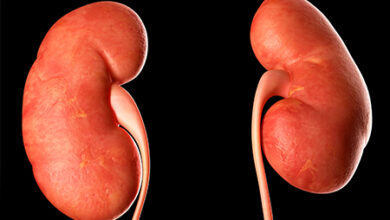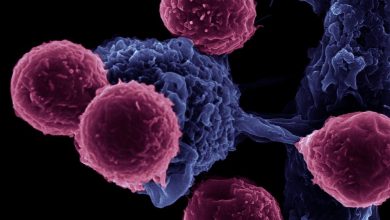Engineered T-Cell Therapy: The Next Direction for RCC Immuno-oncology?


JJ H. Zhang, MD,1 Neal A. Patel, MD,1 Alexandra Drakaki, MD, PhD,1,2 Allan J. Pantuck, MD1,*
1) Institute of Urologic Oncology, Department of Urology, University of California Los Angeles, Los Angeles CA
2) Department of Hematology and Oncology, University of California Los Angeles, Los Angeles CA
ABSTRACT
Synthetic biology in the form of engineered antigen specific T-cells for cancer immunotherapy has demonstrated its potential to revolutionize cancer treatment. However, whereas engineered T-cell therapy is already well established in the treatment of hematologic malignancies, it remains only in the pre-clinical and early clinical development stages in solid organ cancers including RCC. In this review, we consider three T-cell target antigens that have already reached the clinic for kidney cancer, and discuss future novel directions including harnessing the immune system against patient specific neoantigens.
INTRODUCTION
.
Synthetic biology in the form of engineered antigen specific T-cells for cancer immunotherapy holds promising potential to revolutionize the treatment of advanced solid malignancies. Chimeric Antigen Receptor T-cells, or CAR T-cells, are engineered to express chimeric antigen receptors to target tumor-associated antigens independently of the major histocompatibility complex (MHC).1 Hence, they mimic both antibody-based antigen recognition with T-cell receptor function to enable antitumor activity by lysis of the target cells. The genetically engineered CAR fusion protein is transduced ex vivo by means of retroviral or lentiviral vectors into autologous T-cells collected by leukapheresis. Subsequently, CAR T-cells are re-infused into patients following a lymphodepleting conditioning regimen to enable further T-cell expansion and personalized targeted therapy.2
.
The primary advantage of CARs is their ability to recognize tumors based on binding with a single chain variable fragment (scFv) derived from a tumorspecific antibody, and therefore to target antigens expressed on the cell surface without MHC restriction. Autologous CAR T-cell therapy eliminates the potential risk of allogeneic reaction at the expense of a longer manufacturing time due to leukapheresis requirement for every patient, leading to treatment delays and higher manufacturing costs.3 The concept of adoptive transfer of allogeneic CAR T-cells using “off the shelf” as opposed to “made to order,” personalized T-cells aims to address these limitations. The use of allogeneic CAR T-cells from healthy donors has been explored with distinct advantages over autologous therapies, including the potential for standardization of CAR T-cell therapy, increased availability of therapy, ease of redosing or combination of CAR T-cells against multiple targets, decreased time and potentially decreased cost.3 However, one prominent drawback of allogeneic T-cells is the risk of a life-threatening graft vs host disease (GVHD) necessitating further gene editing techniques to avoid the native TCRs of the donor cells recognizing and attacking recipient host tissues as foreign. The second drawback of allogeneic T-cells includes risk of rapid elimination by the host immune system, leading to treatment failure.3
.
T cell receptor-engineered T-cells (TCR-T) represent an alternative way to utilize autologous T lymphocytes to target tumor cells. Mechanistically they differ from CAR-T as they rely on antigen specificity derived from recombinant transduced antigenspecific T-cell receptors rather the antibody binding and recognition, which therefore requires MHC copresentation of the tumor antigens to initiate a further intracellular immune signaling cascade.4 This is potentially advantageous as targets are not limited to cell surface proteins but can be expanded to include intracellular antigen fragments that are presented by MHC proteins. In order to design an effective TCR-T, unique polypeptides that are presented by tumors cells must be identified and then a TCR with a higher affinity to that specific antigen can be genetically engineered.5 If an appropriate target is selected, TCR-T can be a highly effective therapy because only a small amount of tumor antigen is needed to stimulate a robust response as TCR-T rely on native T-cell signaling transduction mechanisms.6 However, similarly to CAR-T, polypeptides that are also cross-expressed in normal tissue must be screened out to limit on target, off tumor toxicity resulting from cytotoxicity of normal cells sharing expression of the target antigen. For example, TCR-T cells targeting MART-1 and MAGE-A3 led to lethal cardiotoxicity in patients with metastatic melanoma in clinical studies, as both target antigens are highly expressed in cardiac tissue.7,8 Both TCR-T and CAR-T have demonstrated striking advancements in the treatment of hematologic malignancies resulting in new standard of care paradigms and the potential for long-term durable cures of refractory liquid tumors, but currently with only limited efficacy in the treatment of solid tumors.2,4
.
Background
.
CAR T-cells have evolved over three generations of CAR constructs to improve the antitumor cytotoxicity and CAR-T cell persistence through the addition of costimulatory domains.1,2,9 The first-generation CAR construct includes a single-chain variable fragment (scFv) antigen-recognition domain, a transmembrane domain, and an intracellular T-cell activation domain derived from CD3 zeta chain. The 2nd generation CAR that is utilized by commercial CAR T-cell products in hematologic malignancies included the addition of a costimulatory domain (either CD28 or 4-1BB). Finally, the 3rd generation CAR incorporates two distinct costimulatory domains (e.g., both CD28 and 4-1BB).2,9 The choice of costimulatory domain may affect T-cell proliferation and persistence1,10
.
The earliest established clinical use of CAR T-cells lies in Hematologic malignancies including leukemias and lymphomas.2 The Landmark Phase II ELIANA trial of anti-CD19 CAR T-cell therapy Tisagenlecleucel-T demonstrated 81% overall remission within 3 months11 and led to the FDA approval of tisagenlecleucel-T in August 2017 for Acute Lymphoblastic Leukemia (ALL) in pediatrics and adults up to age 25.11 The first CAR T-cell therapy for lymphoma was FDA approved after the ZUMA-1 trial of Axicabtagene ciloleucel that demonstrated efficacy of autologous anti-CD19 CAR T-cell therapy in patients with relapsed, refractory large B-cell lymphoma after failure of conventional therapy.12 In total, three CAR T-cell products have been approved to treat relapsed or refractory aggressive B-cell lymphomas: Tisagenlcleucel, axicabtagene ciloleucel, and lisocabtagene maraleucel.13 In contrast, data on CAR T-cell therapy in solid tumors thus far suggests less robust responses and greater challenges.2,14 To date, no CAR T-cell products have been FDA approved for treatment of solid organ malignancies, but some progress has been achieved in pre-clinical and clinical studies of CAR-T and TCR-T in osteosarcoma and gynecologic malignancies.15,16 Ovarian cancer TCR-T candidate targets have focused on melanoma-associated antigen 4 (MAGE-A4) and New York esophageal squamous cell carcinoma 1 (NY-ESO-1) both commonly expressed by ovarian cancer cells. The ongoing NCT03132922 clinical trial for MAGE- 4 TCR-T in multiple cancers including ovarian, bladder, esophageal, head and neck, bladder, melanoma, and synovial sarcoma demonstrated interim partial response in 7 of 28 patients and stable disease in 11 of 28 patients at the cost of significant adverse events.17 Clinical studies have been conducted to evaluate human epidermal growth factor receptor 2 (HER2)-specific CAR T-cells in patients with HER2- positive sarcoma, demonstrating T-cell persistence for at least 6 weeks without significant toxicity.16 A positive clinical response was demonstrating by administering a single agent ultra-low dose of HER2-Car T-cells to 19 sarcoma patients with recurrent or refractory metastatic disease, with subsequent dose escalation to bypass the need for concurrent lymphodepleting chemotherapy.16 However, none of the 19 patients demonstrated a complete response although 4 of 17 measurable patients had stable disease for 12 weeks to 14 months by RECIST criteria.16
.
CAR T-cells for Renal Cell Carcinoma
The utilization of CAR T-cells for solid organ malignancies, including renal cell carcinoma (RCC), is subject to numerous challenges including suppression of T-cell function, inhibition of T-cell localization, toxicity leading to adverse events, and lack of therapeutic response. As of 2020, there were 196 clinical trials of CAR T-cells targeting 57 unique solid tumor entities registered at clinicaltrials.gov, the majority of which were performed in the USA and China.9 Clear cell renal cell carcinoma (ccRCC) is an immunogenic tumor type with moderate tumor mutational burden of 1.42 mutations per megabase18 that has proven to benefit from both cytokine-based and checkpoint inhibitor immunotherapies in advanced and metastatic disease.19,20 However, despite its theoretical promise as an immune-sensitive malignancy, no large clinical trials yet exist for CAR T-cell therapy in RCC. Safety and efficacy are two major limitations that prevent CAR-T therapy from proceeding to clinical trials in RCC. To maximize both safety and efficacy of CAR T-cell immunologic response, antigen selection is vital to reduce offtarget toxicity. In the current review, we examine the furthest developed candidates for CAR-T therapy in RCC.
.
CAIX
Carbonic anhydrase-IX (CAIX) is a 54/58 kDa transmembrane tumorassociated antigen and marker of hypoxia that belongs to the family of carbonic anhydrases, a family of zinc metalloenzymes that catalyzes hydration of CO2 for pH balance in living organisms.21 The CAIX gene is directly activated at a transcriptional level by hypoxia-inducible factor (HIF)-1a leading to proton transport to extracellular medium to lower pH. Therefore CAIX expression serves as a surrogate marker for hypoxia in some tumors.21,22 Specifically for RCC, CAIX is overexpressed in over 90% of ccRCC and over 80% of metastases but not on neighboring normal renal parenchyma.21,23 Patients with Von Hippel Lindau (VHL) mutation characterized by predisposition to ccRCC have also been demonstrated to have higher CAIX expression than those with wildtype VHL.24 CAIX serves as an important prognostic biomarker in patients with ccRCC, with high CAIX score on immunohistochemical staining associated with improved disease free survival and overall survival.25 Conversely, low CAIX expression and absence of VHL mutation is associated with more advanced disease and decreased survival.24 In addition to RCC, CAIX is overexpressed in several other solid tumor types including carcinomas including ovarian, breast, esophageal, bladder, colon, non-small cell lung, dysplasia of cervix and others.21 CAIX has also been proposed historically to be a prognostic marker for favorable response in IL-2 treated patients with RCC,26 though this was not demonstrated prospectively when tested in the SELECT study.
.
Prior to preclinical studies, in vitro and in vivo studies focused on constructing CAR using anti- CAIX scFv.21,27 Lo et al evaluated five anti-CAIX single chain antibodies as candidates for CAR construction and constructed two generations of anti-CAIX CARs using the selected scFvG36 CAR-targeting moiety. They reported in vitro comparisons of both21 to confirm superior effector functions of second generation G36- CD28z CAR T-cells compared with first generation constructs in all in vitro assays including IFN-y, IL-2, and IL- 17 cytokine secretion, cytolytic activity, proliferation, and clonal expansion.21 The same group then reported in vivo superior antitumor activity of second generation CAR T-cells against RCC21 after adoptive transfer of CAR T-cells combined with high-dose interleukin (IL)-2 into RCC-established mice, demonstrating tumor cell apoptosis and regression of CAIX+sk-rc-52 tumors in vivo.21
.
The first clinical study of T-cells genetically modified to express a CAR against CAIX was published in 2006 as a proof of principle that autologous CAR T-cell transfer can be accomplished in metastatic RCC to provide tumor-specific immunity.28 A single chain antibody-type receptor construct that recognizes CAIX was transduced into primary human T-cells. These autologous genetically retargeted T-lymphocytes were administered to three patients with CAIX-positive metastatic clear cell carcinoma who had already undergone radical nephrectomy with metastasis refractory to treatment with interferon alpha.28 The study was not designed to assess clinical efficacy but did confirm off-tumor T-cell mediated cytotoxic effects: two of three patients required cessation of therapy due to hepatotoxicity per NCI Common Toxicity Criteria grades 2-4.28 Liver biopsy confirmed cholangitis with T-cell infiltration of bile ducts and CAIX expression on bile duct epithelial cells, suggesting antigenspecific immunologic mechanism.28 A follow-up study by the same group utilized CAIX CAR-T in 12 patients with CAIX-expressing metastatic RCC and demonstrated increased plasma levels of interferon-gamma, IL-2, and tumor necrosis factor (TNF)-alpha. Similar to prior study, they confirmed grade 2-4 hepatotoxicity at the lowest CAR T doses with CAIX expression and T-cell infiltration on bile duct epithelium, but with the notable novel finding that pre-treatment with CAIX monoclonal antibody G250 helped to circumvent CAR-specific hepatotoxicity.29 This provided additional proof of principle that the on-target toxicity is antigendirected, as blockage of CAR-specific antigen expressed on normal tissue improved the toxicity profile to allow higher doses.29 There is a dose escalation and expansion clinical trial of CAIX-targeted CAR-T cells in the treatment of advanced RCC that is ongoing at The Affiliated Hospital of Xuzhou Medical Center (ClinicalTrials. gov Identifier NCT04969354).30 New progress has been made in creating CAIX-targeted CAR T-cells with different cellular composition in the ccRCC mouse model, more specifically with a CD4/CD8 ratio of 2:1 (CAR 4/8) to balance cytolytic CD8 T-cell killing capacity with cytokine-induced effect of CD4 T-cells.31 Indeed, early results demonstrated superior antitumor efficacy in the ccRCC orthotopic mouse model, increased memory phenotype, and decreased exhaustion genes compared to CAR8 T-cell groups.31
More recent attempts to target CAIX with CAR-T cells while avoiding the observed on-target off-tumor toxicities noted above have led to the development of dual-targeted CAR-T constructs that require targeting and binding of two unique antigens to mediate cellular cytotoxicity. Early pre-clinical data on such a dual construct that targets both CAIX and CD70 (see section below) has been reported.32
.
CD70
CD70, a ligand for CD27, is a costimulatory receptor involved in T-cell proliferation and survival.33,34 CD70 was initially identified as a diagnostic marker for ccRCC by gene expression profiling, real time RT-PCR and IHC.35 A postulated mechanism of CD70 overexpression is due to dysregulated pVHL/HIF pathway in RCC.36 RCC and other solid tumors can constitutively overexpress CD70, making it an effective target of CAR-T cells in vitro and in vivo.37,38 Clinical studies of CD70-expressing RCC and other targeted treatment modalities have demonstrated its potential as a target: an antibody-drug conjugate targeting CD70 (SGN-CD70A) has been tested in a phase I clinical trial for patients with CD70-positive metastatic RCC demonstrating modest clinical results including 13 of 18 with stable disease but only 1 with partial response per RECIST 1.1.39 Aside from RCC, other CD70-expressing tumors include glioblastoma, and hematologic malignancies.
.
Published preclinical data supports the feasibility and safety of using anti-human CD70 CAR to treat cancer patients whose tumors express CD70.40 Seven candidate anti-human CD70 CARs consisting of extracellular binding portion of CD27 fused with 41BB and/or CD3-zeta were constructed for in vitro studies and in vivo adoptive transfer into a CD27-CD3-zeta CAR murine model. In vitro results demonstrated that the CAR consisting of extracellular binding portion of CD27 fused with 41BB and CD3-zeta conferred the highest IFNy production against CD70-expressing tumors.40 In vivo data for renal cell carcinoma demonstrates that mouse xenografts treated with CD70 CAR-T cells showed significantly decreased RCC burden, longer survival times than mice treated with controls (PBS, T-cells, or mock CAR-T cells). In addition, higher cytokine levels of IL-2, TNF-alpha, and IFNy were secreted in peripheral blood of mice treated with CD70 CAR-T cells compared to controls, suggesting that CD70 CAR-T cells may be effective in treating CD70+ RCCs in vivo.38
.
Clinical trials with CD70 CAR-T cells have recently entered the clinic, with the TRAVERSE trial using allogeneic, TALEN gene edited ALLO-316 anti- CD70 T-cells being given Fast Track Designation for the US FDA based on its potential to address an unmet medical need for patients with advanced RCC who have progressed on approved therapies.41–43
.
HERV-E
VHL-deficient ccRCC commonly express transcripts derived from novel human endogenous retrovirus HERV-E. In current literature there are no in-vitro or in-vivo studies of CAR-T targeting HERV-E in RCC, but advancements have been achieved in the development of TCR-T targeting HERV-E.44–47 HERV-E was first identified as a target antigen of RCC-specific CD8+ T-cells due to expression in RCC cell lines and fresh RCC tissue but not in normal kidney or other tissues.47 To provide a clinical proof of principle, T-cells targeting to HERV-E family antigens mediated regression of metastatic RCC in a stem cell transplant recipient.47 Subsequently, HERV-E expression was demonstrated to restrict to ccRCC by mechanism of inactivation of the VHL tumor suppressor and stabilization of HIFs.46 HERV-E expression in ccRCC demonstrated linear correlation to HIF-2alpha levels, while transfection of normal VHL successfully silenced HERV-E expression.46 Cherkasova et al confirmed that T-cells could recognize HLA-A+0201-positive HERV-E-expressing kidney tumor cells suggesting HERV-E envelope peptides as tumor-restricted targets.45 In a separate paper, RNA-seq analysis was performed on RCC tumor samples to determine whether response to Nivolumab was associated with HERV expression, with finding of no association between T-cell reactivity to HERVs and nivolumab response,48 though other published data have supported such an association.49 Taken collectively, these studies suggest prominent potential for future TCR-T or CAR-T against HERV-E in ccRCC. Studies of other tumors have demonstrated the feasibility of CAR T-cell specific for other HERV subtypes: In vivo studies of CAR T-cell generated for breast cancer demonstrated downregulation of HERV-K expression in tumors of mice treated w/ CAR T-cell for HERV-K, upregulation of 53, downregulation of MDM2 and p-ERK.50 Additionally, HERV-K env-specific CAR T-cells demonstrated lysis of HERV-K env(+) tumor targets in melanoma.51 A clinical trial at National Institutes of Health (NCT03354390) is currently ongoing to evaluate the effectiveness and safety of HERV-E TCR transduced autologous T-cells when infused in patients with metastatic ccRCC.52
.
Neoantigens and other Tumor Antigen Targets
Personalized neoantigen-based immunotherapy, based on a patient’s tumor-specific somatic mutational profile, represents the most individualized form of immunotherapy when incorporated into neoantigen long peptide vaccines, dendritic cell vaccines, and neoantigen-reactive T-cells (NRTs).53 Neoantigens are epitope peptides that originate from somatic variants in tumor cells and bind with a patient’s MHC to elicit T-cell mediated antitumor response. Neoantigen candidates may be identified for a specific patient through genomic and transcriptomic profiling of the tumor and administered via personalized neoantigen vaccination. Neoantigens are advantageous as immunologic targets due to specific expression in tumor cells and not normal cells, thereby minimizing the risk of autoimmunity.53 Neoantigenbased cancer immunotherapy has demonstrated therapeutic efficacy in multiple solid tumors including small cell lung cancer54 and glioblastoma.55 Robust data has been published in the pancreatic cancer literature utilizing TCR-T cells targeting neoantigen mutant KRAS G12D expressed in a patient’s tumors, leading to overall partial response of 72% by RECIST criteria at 6 months.56 There is currently limited data on neoantigenbased immunotherapy in renal cell carcinoma, but at least one case report has demonstrated the feasibility of neoantigen-reactive T-cells in a patient with metastatic collecting duct carcinoma refractory to tyrosine kinase inhibitor. Post-therapy biopsy demonstrated reduction in mutant allele frequency corresponding to 12/13 of the neoantigens compared to pre-therapy biopsy, indicating therapeutic efficacy against tumor cells carrying these neoantigens. The patient demonstrated stable tumor burden and significant reduction in bone pain within 3 months.53
.
Renal cell carcinoma has a relatively low tumor mutational burden (TMB) but discrepantly high response to PD-1 inhibition, which counters the association between high TMB and response to immune checkpoint blockade.57 This discordance may lie in small insertions and deletions (indels), as whole-exome sequencing data demonstrates the highest proportion of indels in RCC when compared to a pan-cancer cohort including 5777 solid tumors.58 Therefore, neoantigenbased therapy may be particularly beneficial for renal cell carcinoma due to high immunogenicity of RCC despite relatively low mutation load: neoantigens derived from indel mutations were found to be 9x enriched for mutant specific binding compared to single nucleotide variant derived neoantigens, suggesting that Indels may be the key to activating increased neoantigens and increased mutantbinding specificity in RCC.58
.
Other specific tumor-associated antigens highly aberrantly expressed and mutated in RCC have been identified as potential RCC-specific neoantigen targets for mRNA vaccine development including DNA topoisomerase II alpha (TOP2A), neutrophil cytosol factor 4 (NCF4), formin-like protein 1 (FMNL1) and docking protein 3 (DOK3).59 Other potential tumor antigen candidates for engineered T-cell therapy in RCC include vascular endothelial growth factor receptor 1 (VEGFR1) associated with RCC angiogenesis that has demonstrated good peptide-specific cytotoxic lymphocyte response when administered in a phase I vaccine trial.57 Hypoxia-inducible protein 2 (HIG2) is a growth factor expressed in 86% of RCC that demonstrated HIG2-specific CTL response in 8 of 9 patients after vaccination of a specific HIG2 peptide.57
.
CONCLUSIONS
Engineered T-cell therapy is well established in hematologic malignancies but remains in preclinical and early clinical development for clinical applicability in solid organs including RCC. Current literature suggests that CAIX, CD70 are the primary candidate target antigens for CAR T-cell design for RCC, and HERV-E has demonstrated great promise as a target in ccRCC TCR-T therapy. Future strategies should direct towards finding an optimal target antigen for RCC and minimizing off-target toxicity prior to large-scale clinical trials. The current clinical studies of CAR T-cell therapy in other solid organs include patients with refractory or recurrent metastatic disease after failure of conventional chemotherapy. In this landscape and in part due to the risk of adverse events, we anticipate that the optimal CAR T-cell therapy candidate in the RCC space should also demonstrate failure of conventional approved therapies. CAR T-cells for RCC should be intended to target advanced and refractory disease, or those with strict contraindication to more established immunotherapy. Furthermore, future directions of CAR T-cell therapy include its potential use in combination with established immune checkpoint blockade for synergistic effect. With potential life-threatening adverse events representing a major barrier to CAR T-cell therapy in RCC, we emphasize a need to confirm safety and efficacy before progressing to large clinical trials.
DISCLOSURES
A.J.P. is a consultant for T Cure, a company that has licensed and is developing HERV-E CAR-T for renal cell carcinoma. No additional disclosures
REFERENCES
1. Hong, M., Clubb, J. D. & Chen, Y. Y. Engineering CAR-T Cells for Next- Generation Cancer Therapy. Cancer Cell vol. 38 473–488 (2020).
2. Sermer, D. & Brentjens, R. CAR T-cell therapy: Full speed ahead. Hematological Oncology 37, 95–100 (2019).
3. Depil, S., et al. ‘Off-the-shelf’ allogeneic CAR T-cells: development and challenges. Nature Reviews Drug Discovery vol. 19 185–199 (2020).
4. Liu, Y. et al. TCR-T Immunotherapy: The Challenges and Solutions. Frontiers in Oncology 11, (2022).5. Robbins, P. F. et al. Single and Dual Amino Acid Substitutions in TCR CDRs Can Enhance Antigen-Specific T-cell Functions. The Journal of Immunology 180, 6116–6131 (2008).
6. Rapoport, A. P. et al. NY-ESO-1- specific TCR-engineered T-cells mediate sustained antigen-specific antitumor effects in myeloma. Nature Medicine 21, 914–921 (2015).
7. van den Berg, J. H. et al. Case Report of a Fatal Serious Adverse Event Upon Administration of T-cells Transduced with a MART-1-specific T-cell Receptor. Molecular Therapy 23, 1541–1550 (2015).
8. Linette, G. P. et al. Cardiovascular toxicity and titin cross-reactivity of affinityenhanced T-cells in myeloma and melanoma. (2013) doi:10.1182/blood-2013-03.9. Yong, C. S. M. et al. CAR T-cell therapy of solid tumors. Immunology and Cell Biology vol. 95 356–363 (2017).10. Collinson-Pautz, M. R. et al. Constitutively active MyD88/CD40 costimulation enhances expansion and efficacy of chimeric antigen receptor T-cells targeting hematological malignancies. Leukemia 33, 2195–2207 (2019).
11. Maude, S. L. et al. Tisagenlecleucel in Children and Young Adults with B-Cell Lymphoblastic Leukemia. New England Journal of Medicine 378, 439–448 (2018).
12. Neelapu, S. S. et al. Axicabtagene Ciloleucel CAR T-Cell Therapy in Refractory Large B-Cell Lymphoma. New England Journal of Medicine 377, 2531–2544 (2017).
13. Jacoby, E. & Avigdor, A. CAR T-cells for the long run in aggressive B-cell lymphoma. The Lancet Oncology vol. 22 1347–1348 (2021).
14. Pule, M. A. et al. Virus-specific T-cells engineered to coexpress tumorspecific receptors: Persistence and antitumor activity in individuals with neuroblastoma. Nature Medicine 14, 1264– 1270 (2008).
15. Xu, Y. et al. Engineered T-cell Therapy for Gynecologic Malignancies: Challenges and Opportunities. Frontiers in Immunology vol. 12 (2021).
16. Ahmed, N. et al. Human epidermal growth factor receptor 2 (HER2) – Specific chimeric antigen receptor – Modified T-cells for the immunotherapy of HER2-positive sarcoma. Journal of Clinical Oncology 33, 1688–1696 (2015).
17. Hong, D. S. et al. Phase I dose escalation and expansion trial to assess the safety and efficacy of ADP-A2M4 SPEAR T-cells in advanced solid tumors. J Clin Oncol 38, (2020).
18. de Velasco, G. et al. Tumor mutational load and immune parameters across metastatic renal cell carcinoma risk groups. Cancer Immunology Research 4, 820–822 (2016).
19. Yang, J. C. & Childs, R. Immunotherapy for renal cell cancer. Journal of Clinical Oncology vol. 24 5576– 5583 (2006).
20. Rini, B. I. et al. The society for immunotherapy of cancer consensus statement on immunotherapy for the treatment of advanced renal cell carcinoma (RCC). Journal for ImmunoTherapy of Cancer 7, (2019).
21. Lo, A. S. Y., Xu, C., Murakami, A. & Marasco, W. A. Regression of established renal cell carcinoma in nude mice using lentivirus-transduced human T-cells expressing a human anti-CAIX chimeric antigen receptor. Molecular Therapy – Oncolytics 1, 14003 (2014).
22. Loncaster, J. A. et al. Carbonic Anhydrase (CA IX) Expression, a Potential New Intrinsic Marker of Hypoxia: Correlations with Tumor Oxygen Measurements and Prognosis in Locally Advanced Carcinoma of the Cervix 1. CANCER RESEARCH vol. 61 (2001).
23. Oosterwijk, E., Ruiter, D., Hoedemaeker, P., Pauwels, E. & Zwartenduk, J. MONOCLONAL ANTIBODY G 250 RECOGNIZES A DETERMINANT NORMAL KIDNEY PRESENT IN RENALCELL CARCINOMA AND ABSENT FROM. vol. 38 (1986).24. Patard, J. J. et al. Low CAIX expression and absence of VHL gene mutation are associated with tumor aggressiveness and poor survival of clear cell renal cell carcinoma. International Journal of Cancer 123, 395–400 (2008).
25. Chamie, K. et al. Carbonic anhydrase-IX score is a novel biomarker that predicts recurrence and survival for high-risk, nonmetastatic renal cell carcinoma: Data from the phase III ARISER clinical trial. Urologic Oncology: Seminars and Original Investigations 33, 204.e25- 204.e33 (2015).26. Atkins, M. et al. American Association for Cancer Research. Imaging, Diagnosis, Prognosis Cancer Research. Clin Cancer Res vol. 11 www.aacrjournals.org (2005).
27. E Weijtens, B. M., Willemsen, R. A., Valerio, D. & Stam, K. lyse tumor cells, and recycle lytic capacity. T lymphocytes produce cytokines, specifically Single chain Ig/gamma gene-redirected human. http:// www.jimmunol.org/content/157/2/836 (1996).
28. Lamers, C. H. J. et al. Treatment of Metastatic Renal Cell Carcinoma with Autologous T-Lymphocytes Genetically Retargeted Against Carbonic Anhydrase IX: First Clinical Experience. Journal of Clinical Oncology 24, e20–e22 (2006).
29. Lamers, C. H. J. et al. Treatment of metastatic renal cell carcinoma with CAIX CAR-engineered T-cells: Clinical evaluation and management of on-target toxicity. Molecular Therapy 21, 904–912 (2013).30. Clinical Study of CAIX-targeted CAR-T Cells in the Treatment of Advanced Renal Cell Carcinoma. (2021).31. Wang, Y. et al. Anti-CAIX BBζ CAR4/8 T-cells exhibit superior efficacy in a ccRCC mouse model. Molecular Therapy – Oncolytics 24, 385–399 (2022).
32. Wang, Y. et al. Abstract 6606: Develop Dual-Targeted CAR-T Cells to Achieve RCC Cure. Cancer Res 80, 6606 (2020).33. Beckmann, R. A. et al. provides a second signal for T-cell activation. Engagement of CD27 with its ligand CD70. http://www.jimmunol.org/ content/154/6/2612 (2021).
34. Hendricks_2000_CD27 is Required For Generation and Long Term Maintenance of T-cell Immunity.
35. Diegmann, J. et al. Identification of CD70 as a diagnostic biomarker for clear cell renal cell carcinoma by gene expression profiling, real-time RT-PCR and immunohistochemistry. European Journal of Cancer 41, 1794–1801 (2005).
36. Ruf, M. et al. pVHL/HIF-regulated CD70 expression is associated with infiltration of CD27+ lymphocytes and increased serum levels of soluble CD27 in clear cell renal cell carcinoma. Clinical Cancer Research 21, 889–898 (2015).
37. Yang, M. et al. Tandem CAR-T cells targeting CD70 and B7-H3 exhibit potent preclinical activity against multiple solid tumors. Theranostics 10, 7622–7634 (2020).
38. Ji, F. et al. Targeting the DNA damage response enhances CD70 CAR-T cell therapy for renal carcinoma by activating the cGAS-STING pathway. Journal of Hematology and Oncology vol. 14 (2021).
39. Pal, S. K. et al. A phase 1 trial of SGN-CD70A in patients with CD70-positive, metastatic renal cell carcinoma. Cancer 125, 1124–1132 (2019).40. Wang, Q. J. et al. Preclinical evaluation of chimeric antigen receptors targeting CD70-expressing cancers. Clinical Cancer Research 23, 2267–2276 (2017).
41. Safety and Efficacy of ALLO-316 in Subjects with Advanced or Metastatic Clear Cell Renal Cell Carcinoma (TRAVERSE). ClinicalTrials.gov Identifier:NCT04696731 (2021).
42. A Safety and Efficacy Study Evaluating CTX130 in Subjects with Relapsed or Refractory Renal Cell Carcinoma (COBALT-RCC). ClinicalTrials. gov Identifier: NCT04438083 (2020).43. Administering Peripheral Blood Lymphocytes Transduced with a CD70- Binding Chimeric Antigen Receptor to People with CD70 Expressing Cancers. ClinicalTrials.gov Identifier: NCT02830724 (2016).
44. Cherkasova, E., Weisman, Q. & Childs, R. W. Endogenous retroviruses as targets for antitumor immunity in renal cell cancer and other tumors. Frontiers in Oncology 3 SEP, (2013).45. Cherkasova, E. et al. Detection of an immunogenic HERV-E envelope with selective expression in clear cell kidney cancer. Cancer Research 76, 2177–2185 (2016).
46. Cherkasova, E. et al. Inactivation of the von Hippel-Lindau tumor suppressor leads to selective expression of a human endogenous retrovirus in kidney cancer. Oncogene 30, 4697–4706 (2011).
47. Takahashi, Y. et al. Regression of human kidney cancer following allogeneic stem cell transplantation is associated with recognition of an HERV-E antigen by T-cells. Journal of Clinical Investigation 118, 1099–1109 (2008).48. Au, L. et al. Determinants of anti- PD-1 response and resistance in clear cell renal cell carcinoma. Cancer Cell (2021) doi:10.1016/j.ccell.2021.10.001.
49. Smith, C. C. et al. Endogenous retroviral signatures predict immunotherapy response in clear cell renal cell carcinoma. Journal of Clinical Investigation 128, 4804– 4820 (2018).50. Zhou, F. et al. Chimeric antigen receptor T-cells targeting HERV-K inhibit breast cancer and its metastasis through downregulation of Ras. OncoImmunology 4, (2015).
51. Krishnamurthy, J. et al. Genetic engineering of T cells to target HERV-K, an ancient retrovirus on melanoma. Clinical Cancer Research 21, 3241–3251 (2015).
52. HERV-E TCR Transduced Autologous T Cells in People with Metastatic Clear Cell Renal Cell Carcinoma. ClinicalTrials.gov Identifier: NCT03354390 (2017).
53. Schuster, S. J. et al. Long-term clinical outcomes of tisagenlecleucel in patients with relapsed or refractory aggressive B-cell lymphomas (JULIET): a multicentre, open-label, single-arm, phase 2 study. The Lancet Oncology 22, 1403–1415 (2021).
54. Schubert, M. L. et al. Side-effect management of chimeric antigen receptor (CAR) T-cell therapy. Annals of Oncology vol. 32 34–48 (2021).55. McLellan, A. D. & Ali Hosseini Rad, S. M. Chimeric antigen receptor T cell persistence and memory cell formation. Immunology and Cell Biology vol. 97 664–674 (2019).
Correspondence to: Allan J. Pantuck, MD, MS, FACS UCLA Institute of Urologic Oncology, Department of Urology; David Geffen School of Medicine at UCLA. Email: apantuck@mednet.ucla.edu






